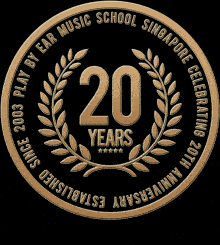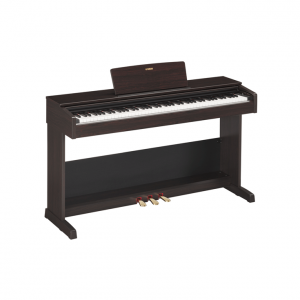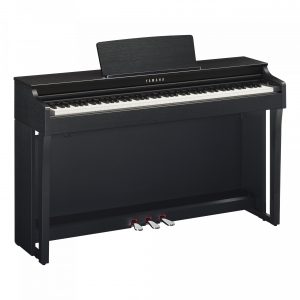SKU
Physis-Piano-K4-EX
Categories Digital Pianos, Physis Piano, Slab Pianos, Stage Pianos, Viscount
Tags console pianos, digital pianos, Physis, sound modelling, Viscount
Viscount Physis Piano
K4 EX
Express the beauty and passion in your music with Physis sound modelling
Designed to satisfy players who need the outstanding power of a professional MIDI controller combined with the feel of a real piano, the Physis Piano K4 EX features 88-note, weighted hammer-action keyboard able to provide an impressive feel and response. The instrument is expanded with Physis Piano “Physical Modeling Piano Board” making this keyboard really interesting choice for both stage and studio.
Viscount Physis Piano K4 EX Digital Key points
- Physical Sound Modelling to give the most express sounds at your demand
- Fatar Hammer Action Keyboard Action
Free Gifts
- Limited edition PBE leather journal cover
Comes With
- Power adapter
- Free delivery within 2 working days
- 1 year Viscount warranty
Purchase online at
Additional information
| Number of keys | 88 |
|---|---|
| Action | Fatar Hammer Action (HA) |
| Key material | Matte plastic |
| Sound technology | Physis® Physical Sound Modelling |
| Polyphony | Unknown |
| Tones | Unknown |
| Amplifier output | Not applicable |
| Speaker size | Not applicable |
| Colour | Dark Blue |
| Piano stand | None |
| Dimensions and Weight | 1287 x 355 x 134 mm, 19.8 kg |
Description
Designed to satisfy players who need the outstanding power of a professional MIDI controller combined with the feel of a real piano, the Physis Piano K4 EX features 88-note, weighted hammer-action keyboard able to provide an impressive feel and response. A complete set of 27 Full Assignable real time Controllers, 256 independent Midi Channels on 8 zones, 4 USB host ports, tons of programmable scenes, will be able to allow a complete control over music software or the most complex MIDI environment. The instrument is expanded with Physis Piano “Physical Modeling Piano Board” making this keyboard really interesting choice for both stage and studio.
Expanded Version
Physis EX is the expansion sound board for the K4 / K5 MIDI/USB Controller.
The core of Physis EX is a new technology, based on complex mathematical algorithms that faithfully simulate the mechanical and acoustic phenomena which generate the sound of real instruments. This is called a “physical model” and it is the heart of Physis technology.
This revolutionary sound technique does not require recording real instruments – a technique used by all others digital instruments today. Physis technology “calculates” in real time the waveform that each sound generates, through an accurate mathematical model. Such a model is based on a thorough and careful study of the way sound is produced in a given instrument. All parameters are taken into account by these physical models: for example, the materials of the instrument, the size and position of the components, of the instrument etc…
This means that Physis instruments do not simply “reproduce” a recorded sound, and can therefore reach a level of realism and detail that were unattainable before; the realism of real instruments. The model replicates the original instrument, generating a different sound for each key, as in an acoustic piano. It is also able to produce a different sound at each subsequent pressure of the same key, keeping in mind the previous conditions.
If you would like a the benefits of sound modelling at a lower cost, try Roland digital pianos such as the FP-90 that features their SuperNATURAL sound modelling technology.
Sound Generation
The Physis Piano generates sound through a Patented system of mathematical algorithms. This process reproduces with absolute fidelity the dynamics and physical-acoustic phenomena of the piano – giving you the absolute most expressive and authentic playing experience.
Taking over 7 years of intense research, the Physis Piano contains six different sound generation algorithms: Acoustic Piano Model (APM), Electric Piano Model (EPM), Wurly Piano Model (WPM), Harpsichord Piano Model (CPM), Mallet Acoustic Model (AMM), High Definition Sound Engine (HDSE). This sound library has been designed and optimized to give you a set of reference sounds of a fidelity never experienced before. The expressive possibilities of the Physis Piano are limitless.
This instrument gives you not only a great control over the sound, but also endless customization. You can create your own piano – modifying the length of the piano, the resonance of the strings, the morphology of the hammers and much more! Or, configure your own electric piano – modifying the position of the transducers or the size of the tone bar. Everything thanks to the amazing internal computational power which is estimated at up to 24 BILLION calculations per second!
Full Specifications
| Technology | PHYSIS® PHYSICAL MODELING |
|---|---|
| Keyboard | 88 Hammer-Action Weighted keys with Aftertouch |
| String Resonance | Yes |
| Damper Resonance | Yes |
| Controls | – 1 x Audio Volume Slider – 8 x lighted Zone Buttons – 4 x lighted Bank Buttons of 27 full-assignable Controls – 9 x full-360° Rotary Controls ( with 4 Banks for 36 pots in total ) – 9 x long-throw 45mm Slider Controls ( with 4 Banks for 36 pots in total ) – 9 x lighted Button Controls ( with 4 Banks for 36 switches in total ) – 2 x 180° Wheels ( 1 Wheel with 90° centered position ) – 8 x full-assignable potentiometric Pedal Inputs – Fast entry Alpha-Numeric Keypad – 5 x dedicated Sequencer Remote Buttons for Midi Machine Control Commands – 1 x dedicated Transpose Button for fast changes of key – 4.3″ Multicolor Graphic LCD Display (480*272 dots) |
| Memories | – 128 full-programmable Performances – 4 Indipendent Scenes for each Performance – 8 Midi Zones + 4 Controller Banks for each Scene – Selectable/Editable Velocity Curves + Velocity Ranges and Key Ranges for each Zone |
| Connections | – 8 x Indipendent Midi Outputs – 2 x Indipendent Midi Inputs – 4 x Host USB Ports – 1 x Device USB Port (Windows XP ® / Windows 7 ® and Mac OS X ® compatible) – 2 x Audio Outputs ( L/R unbalanced 1/4″ jack ) – 1 x Headphones Output ( stereo 1/4″ jack ) |
| Expansions | Sound Expanded with Physis Piano Engine |
| Dimensions (WxHxD) | mm 1287 x 134 x 355 – 50.7″”x 5.3″ x 14.0″ |
| Colours / Finishes | Blue |
| Weight | Kg 19.8 / Lbs 43 |
Others
Social media
Free Online Pop Piano Lessons
Free Online Pop Vocal Lessons
Free online pop guitar lessons
Instruments support
Examinations and assessments
Student privileges
Legal matters
Others
Social media
Free Online Pop Piano Lessons
Free Online Pop Vocal Lessons
Free online pop guitar lessons
Instruments support
Examinations and assessments
Student privileges
Legal matters
COPYRIGHT © 2003-2024 PLAY BY EAR






